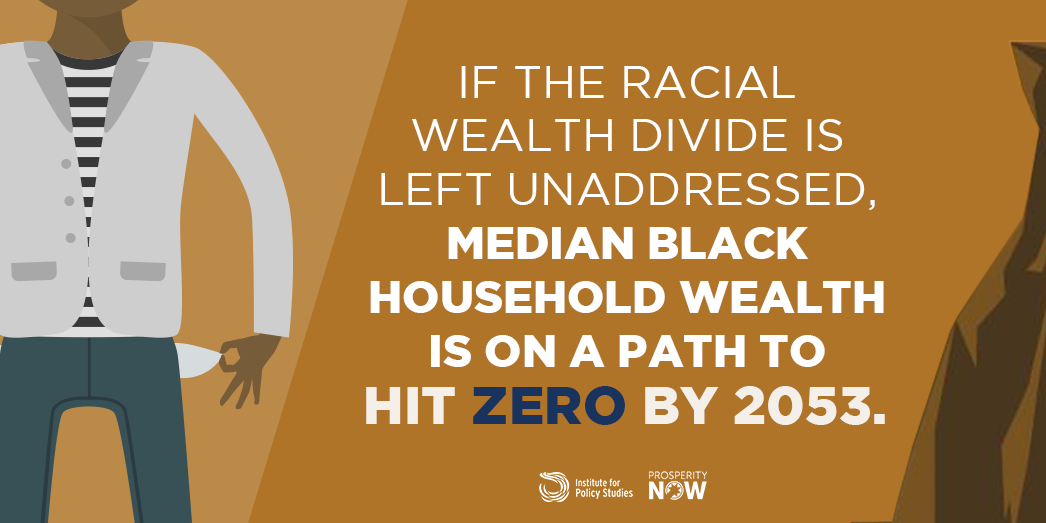In this report , we look at the racial wealth divide at the median over the next four and eight years, as well as to 2043, when the country’s population is predicted to become majority non-white. We also look to wealth rather than income to reconsider what it means to be middle class. In finding an ever-accelerating gap, we consider what it means for the American middle class and we explore what policy interventions could reverse the trends we see today. We find that without a serious change in course, the country is heading towards a racial and economic apartheid state.
, we look at the racial wealth divide at the median over the next four and eight years, as well as to 2043, when the country’s population is predicted to become majority non-white. We also look to wealth rather than income to reconsider what it means to be middle class. In finding an ever-accelerating gap, we consider what it means for the American middle class and we explore what policy interventions could reverse the trends we see today. We find that without a serious change in course, the country is heading towards a racial and economic apartheid state.
Key Findings:
- While households of color are projected to reach majority status by 2043, if the racial wealth divide is left unaddressed, median Black household wealth is on a path to hit zero by 2053 and median Latino household wealth is projected to hit zero twenty years later. In sharp contrast, median White household wealth would climb to $137,000 by 2053.
- If current trends continue, by 2020 median Black and Latino households stand to lose nearly 18% and 12% of the wealth they held in 2013, respectively, while median White household wealth increases 3%. At that point–just three years from now–White households are projected to own 86 times more wealth than Black households and 68 times more wealth than Latino households.
- The declining wealth of households of color is already taking a significant toll on the broader economy. The nation’s overall median wealth decreased nearly 20% from 1983 to 2013 ($78,000 to $64,000—a period when Black and Latino median wealth went down and White wealth slowly went up.
- Even earning a middle-class income does not guarantee a family middle-class economic security, according to the report. White households in the middle income quintile—those earning $37,201-61,328 annually—own nearly eight times as much wealth ($86,100) as Black middle-income earners ($11,000) and ten times that of their Latino counterparts ($8,600).
- This disconnect in income and wealth is visible across every socioeconomic level. The report found that on average, only Black and Latino households with an advanced degree have middle-class wealth or higher, while White households, on average, need only a high school diploma to attain that same level of wealth.
The report calls on the Trump administration and Congress to consider a range of policy options to help close the racial wealth divide. They include:
- Changing our tax code to stop subsidizing those who are already wealthy and start investing in opportunities for low-wealth families to build wealth. Specifically, the report recommends reforming the mortgage interest deduction and other tax expenditures, bolstering and expanding the federal estate tax, and creating a net-worth tax on multi-million-dollar fortunes.
- Protecting low-wealth families from wealth-stripping practices by strengthening the Consumer Financial Protection Bureau and closing the offshore tax shelters currently enabling the ultra-wealthy to hide their assets.
- Investing in bold new programs like Children’s Savings Accounts, automatic-enrollment retirement accounts, federal jobs guarantees, and a racial wealth divide audit of government policies.
Read the full report here [PDF].
Find sharable graphics here.
